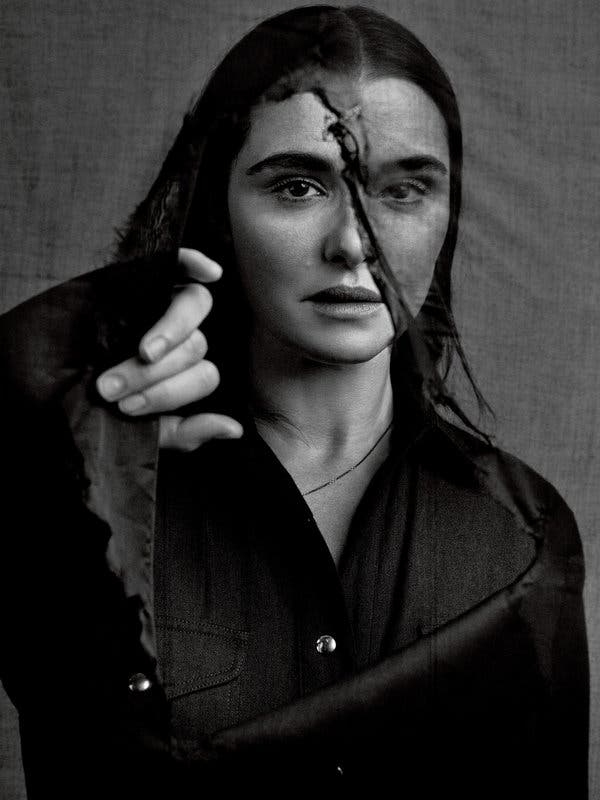
“Rachel Weisz Is Performing for Herself” by Susan Dominus
In a profile as beguiling as the actress herself, who was one of T’s four Greats honorees this year, Dominus subverts the traditional celebrity interview in service of writing a piece on female power dynamics in a changing Hollywood landscape: For Weisz, Dominus writes, “The idea all along, since she was in college, seems to be to escape familiar talking points of any kind, to defy tidy boxes that place her neatly in some category.” Read more.
“A Bid to Maintain One of the World’s Oldest Culinary Traditions” by Ligaya Mishan
The Parsis of Western India have one of the richest food histories in the world, but as their population dwindles, so too does their stupor-inducing cuisine. In this poetic travelogue, Mishan reminds us that “food is heritage, and cooking and eating it are daily acts of continuing, a means of preserving identity in even the most desperate and unspeakable of circumstances.” Read more.
“In Conversation: Rihanna” by Jeremy O. Harris
As the pop star planned to launch her luxury label with Louis Vuitton, T scored an exclusive interview — conducted by the playwright Jeremy O. Harris, who uses one of her songs in “Slave Play” on Broadway — wherein Rihanna discusses what it means to be a black women at the top of the fashion industry. In this funny and smart Q. and A., the energy is palpable between the two artists. Read more.
“America 2024” by Jocelyn Bioh, Jackie Sibblies Drury, Jeremy O. Harris, Naomi Iizuka, Michael R. Jackson, Patricia Ione Lloyd, Ted Malawer, Mona Mansour, Terrence McNally, Lynn Nottage, Adam Rapp, Paul Rudnick, Nassim Soleimanpour, Celine Song and Sharr White
For T’s culture issue, we asked 15 rising and established playwrights to create original scripts around the theme “America 2024,” musing on what the world will look and feel like five years from now. When read as a whole — in all its dramatic, comic and sometimes tragic glory — the project transmits urgent messages and meanings about what it is to be American today. Read more.
“The Story of the Great Japanese-American Novel” by Thessaly La Force
The Japanese-American writer John Okada wrote the novel “No-No Boy” in 1957 about a draft resister who has just returned home to Seattle after being incarcerated by the American government during World War II. But the story behind the novel’s publication and its later rediscovery — along with that of four other works of literature written by Japanese-Americans at around the same time — reveals a devastating chapter in America’s past as well as clues as to why history is now repeating itself. Read more.
“Utopia, Abandoned” by Nikil Saval
In the 1950s, spurred in part by the humanist inclinations of its owner Adriano Olivetti, the Olivetti typewriter manufacturer embarked on an experiment in employee welfare among its laborers in Ivrea, Italy. But as the company foundered in the second half of the 20th century, the town, whose fate had become inextricably wrapped up in that of Olivetti, began to wither: Saval visits the town to explore what remains today, a silent monument to an aborted utopia. Read more.
“Japan in Bloom” by Hanya Yanagihara
For more than a thousand years, the cherry blossom, or sakura, has been synonymous with Japan. It is such an essential symbol that nearly every Japanese visual artist has been compelled to address it in their work. But how exactly did this infatuation begin — and why has it lasted? Read more.
“‘‘Giovanni’s Room’ Revisited” by Hilton Als
With 1956’s “Giovanni’s Room,” James Baldwin wrote one of modern literature’s most resonant — and complicated — gay love stories. But though it has endured as a testament to queer desire, it also speaks to the writer’s fraught relationship with his own blackness and masculinity. Here, a reconsideration and a reimagining of Baldwin’s classic novel. Read more.
“Long Live Eccentric English Design” by Nancy Hass
The singularly bonkers aesthetic honed in the United Kingdom over the centuries has reached a contemporary apotheosis — and this group of stars is rising to the top of the heap in international interior design by both referencing their country’s history and reflecting on color, wit and wackiness. Read more.
“In Chile, Homes as Extreme as the Landscape Itself” by Michael Snyder
The longest, skinniest, most extreme South American nation has become an architecture pilgrimage among cognoscenti looking to discover the future of buildings — and of Modernism, too. Snyder explores that heritage with deep knowledge and evocative prose. Read more.
“The Gay History of America’s Classic Children’s Books” by Jesse Green
Many of the authors we all read as children — including James Marshall, Maurice Sendak, Louise Fitzhugh, Margaret Wise Brown and Arnold Lobel — or read to our children, were queer but not out. In this moving and personal essay, Green explores what these writers were trying to say with their tender work and how they spoke in a secret language to generations of kids who needed them. Read more.
“The Man Turning European Fashion Into Something Raw and Real” by Nancy Hass
In this profile, Hass dissects what she calls the “artful, ragged quilt of ideas” belonging to the designer Jonathan Anderson, whose collections — for Loewe, the Spanish heritage brand he took over in 2013, for his eponymous line JW Anderson and even for his ongoing collaboration with Uniqlo — rethink fashion’s relationship to the traditional crafts and silhouettes of previous centuries. Read more.
“How Today’s Queer Artists Are Revising History” by Jesse Green
Some of the most interesting and moving art being made across all genres today is by L.G.B.T.Q. people who are refuting and reimagining the past, unearthing gay and trans people from previous eras or writing their issues and stories into history. With dignity and grace, Green’s critical essay masterfully weaves dozens of creative works together, looking backward to predict the future. Read more.




